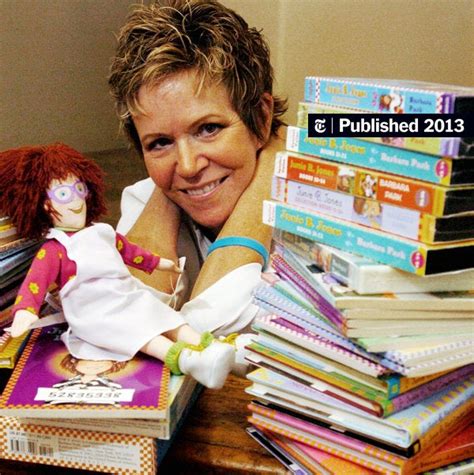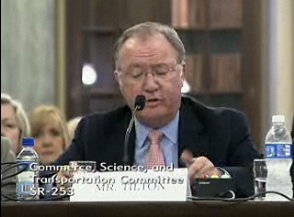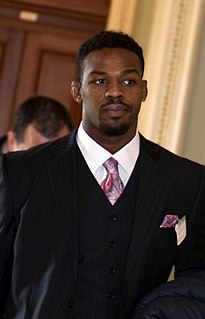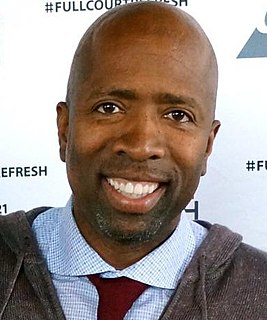Цитата Криса Гронковски
Я связался по телефону с клиентами, оставившими негативные отзывы, и имел возможность познакомиться с ними. Мало того, что я смог решить их проблемы, многие клиенты были настолько довольны обслуживанием клиентов, что стали постоянными клиентами.
Связанные цитаты
Часто очень талантливым техническим специалистам чрезвычайно трудно принять точку зрения клиентов, которые часто ничего не знают о технологии и у которых могут быть сильные и, возможно, неправильные предубеждения о ней. Технические специалисты могут в глубине души полагать, что они лучше знают, что «должно» понадобиться клиентам. У клиентов, конечно, другая точка зрения. Им нужны продукты, которые решат проблемы клиентов и обеспечат другие преимущества для клиентов, и сделают это без чрезмерного риска или затрат. Нередко клиенты рассматривают передовые технологии как риск.
Обслуживание На протяжении многих лет основным фактором нашего роста в Zappos были постоянные клиенты и сарафанное радио. Наша философия заключалась в том, чтобы взять большую часть денег, которые мы бы потратили на платную рекламу, и вместо этого инвестировать их в обслуживание клиентов и качество обслуживания клиентов, позволяя нашим клиентам делать маркетинг для нас из уст в уста.
Иногда есть клиенты, которые попадают в затруднительное положение из-за ситуаций, которые находятся вне их контроля. Это клиенты с подлинными потребностями, и роль банка заключается в том, чтобы удовлетворить этих клиентов, и существует реальная необходимость реструктуризации кредитов этих клиентов.
Дисциплина «снаружи внутрь» требует, чтобы у вас была явная клиентоориентированная причина для всего, что вы делаете на рынке. Менеджеры должны создавать то, что я называю «картинками клиентов», словесные описания клиентов, которые подчеркивают ключевые характеристики клиентов и оживляют этих клиентов. Хотя менеджеры никогда не знают о клиентах столько, сколько они хотят и должны знать, дисциплина «снаружи внутрь» требует, чтобы они в любом случае создавали картины клиентов, основываясь на любых имеющихся у них достоверных данных, а также на гипотезах и интуиции.
Если вы спросите, кто является заказчиком образования, заказчиками образования является общество в целом, работодатели, которые нанимают людей, и тому подобное. Но в конечном итоге я думаю, что клиенты — это родители. Даже не ученики, а родители. Проблема, которая у нас есть в этой стране, заключается в том, что клиенты ушли. Клиенты перестали обращать внимание на свои школы, по большей части.
Часто люди говорят, что не могут основывать свои стратегии на клиентах, потому что клиенты делают необоснованные запросы и потому что клиенты слишком разные. Подобные мнения свидетельствуют о серьезных заблуждениях. Настоящая компания, работающая снаружи, определенно не пытается удовлетворить все потребности своих клиентов. Вместо этого ее менеджеры четко понимают, что их организация может и должна сделать для клиентов, и все, что они делают, они делают хорошо. Они фокусируются.
Самый простой способ выяснить, кто является покупателем в онлайн-пространстве, — это выяснить, кто платит за вещь. Обычно люди, которые платят, являются клиентами. Итак, на Facebook люди, которые платят, — это маркетологи. Это делает их клиентами. И это означает, что мы являемся продуктом, доставляемым этим клиентам.
Я думаю, может быть, 50 лет назад люди и компании чувствовали, что им приходится выбирать между максимизацией прибыли и удовлетворением клиентов или удовлетворением сотрудников, и я думаю, что мы на самом деле живем в особое время, когда все гиперсвязаны, будь то через Twitter или блоги и так далее. на. Информация распространяется так быстро, что на самом деле возможно иметь все, чтобы клиенты были довольны благодаря обслуживанию клиентов, чтобы сотрудники были счастливы благодаря сильной корпоративной культуре, и это действительно способствовало росту и прибыли.



































